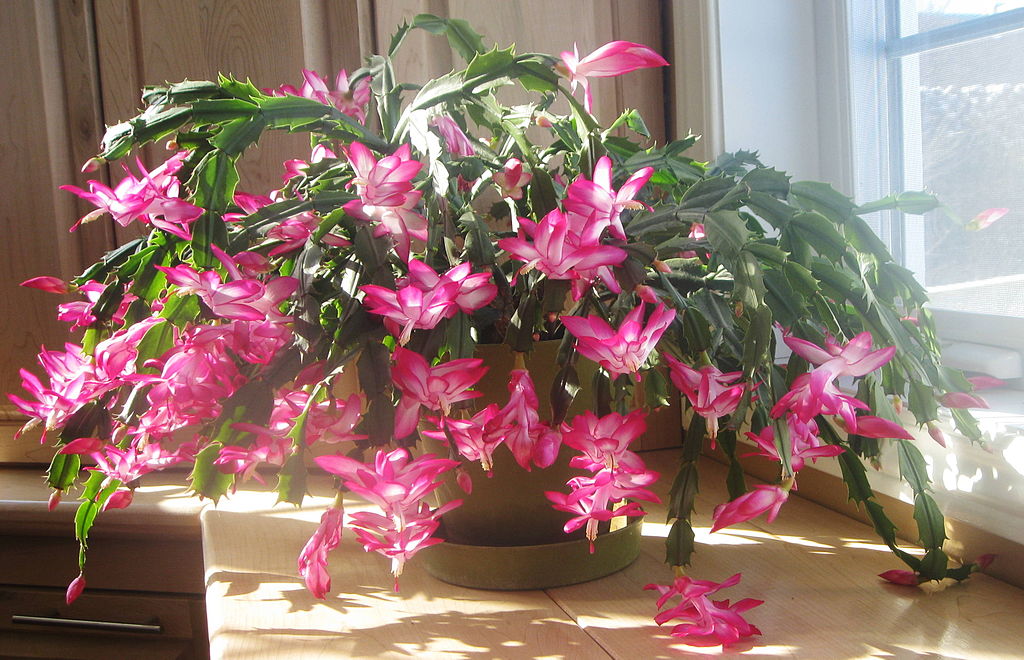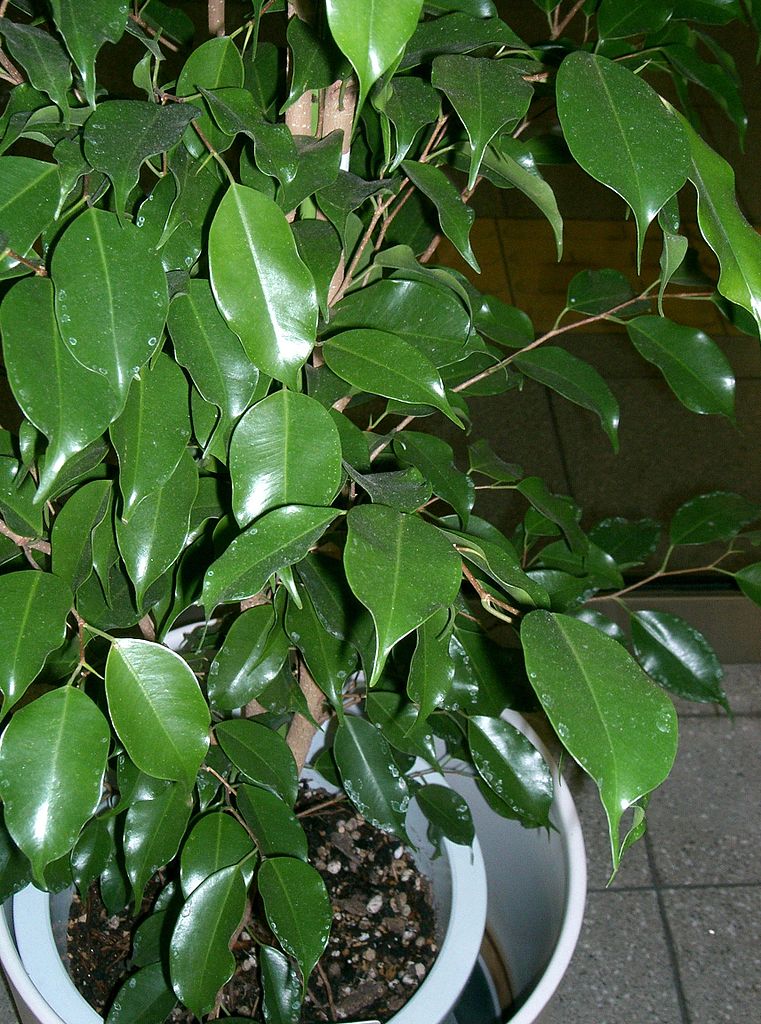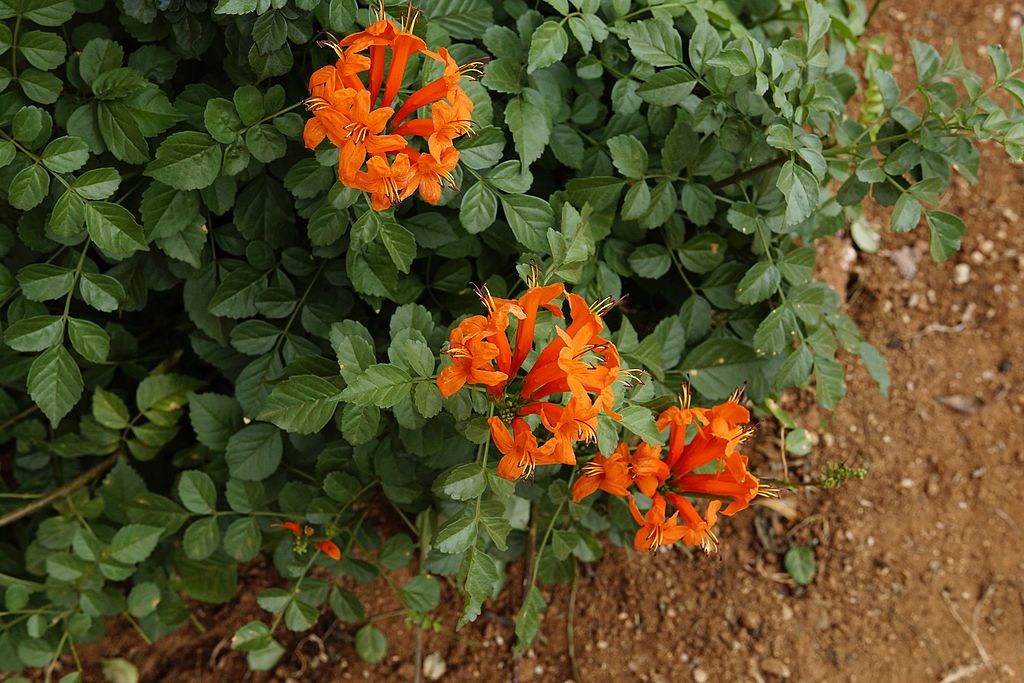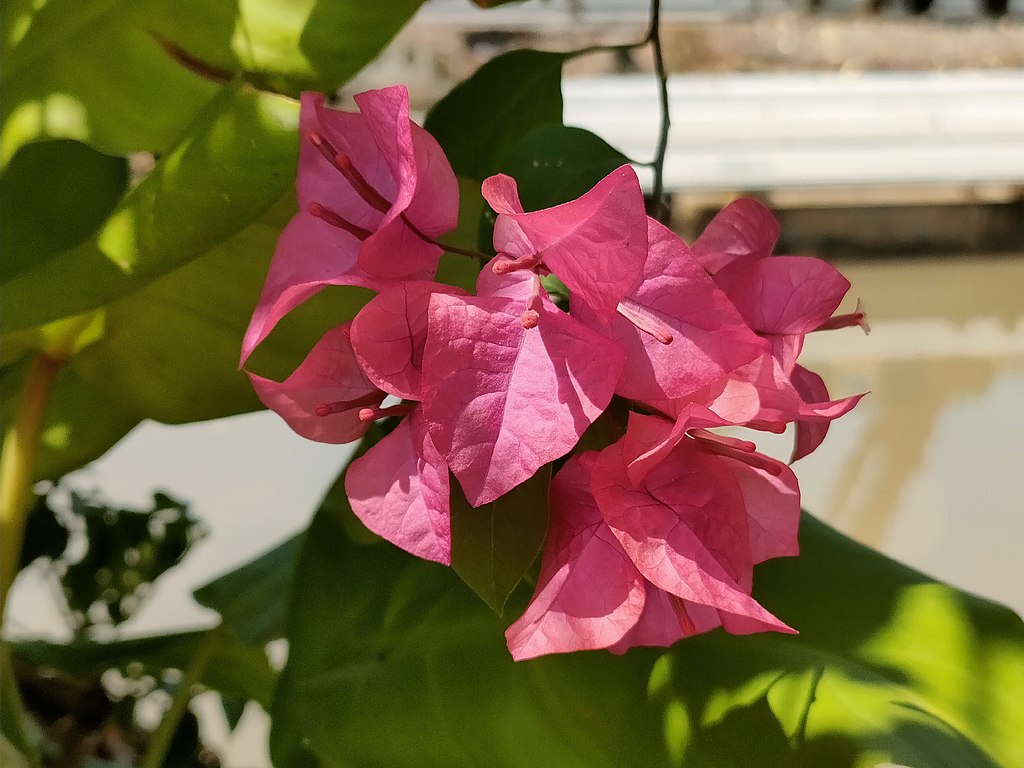The Thanksgiving cactus (Schlumbergera truncata) is a popular tropical cactus that is sold around the holidays for its gorgeous and prolific flowers.
As its common name indicates, the Thanksgiving cactus is known for blooming around Thanksgiving, bringing a splash of color into your home just as the weather outdoors is getting colder.
Native to the tropical and subtropical regions of Brazil, the Thanksgiving cactus is not your typical cactus—it is actually an epiphyte that grows naturally from trees and branches in jungle environments. This means that its care differs drastically from desert cacti, and there are a couple of important things you will need to keep in mind when it comes to caring for this popular holiday cactus.
Other names this plant is known are: Christmas cactus, Crab cactus, Holiday cactus and Schlumbergera truncata.
It is one of three common holiday cacti that are often confused with one another: the Thanksgiving cactus, the Christmas cactus, and the Easter cactus. While they all look similar, they are technically three different species of Schlumbergera with unique care requirements.
The Thanksgiving cactus has leaves with sharp-toothed edges, while the Christmas cactus has leaves that are scalloped or teardrop-shaped, and the Easter cactus has leaves with rounded edges. The second difference is when the cacti bloom, which is evidenced by their common names.
When Thanksgiving cactus blooms
They typically begin to bloom from November through January.
Flowers begin to form by lengthening nights and when nighttime temperatures drop below 13 degrees Celsius.
It is best to move your Christmas cactus outdoors, if you cannot meet these requirements indoors.
Move your Christmas cactus outdoors in the fall typically in October.
However, if temperatures drop below freezing, make sure you protect and cover your cactus as freezing temperatures can kill your plant.
Tip: Cooler temperatures also keep the flowers lasting longer.
How to grow Thanksgiving cactus indoors
These tropical cacti are surprisingly easy to keep happy indoors.
They do well in typical household conditions and don’t need to be fussed over.
Light
In the spring and summer, the Thanksgiving cactus does best in medium indirect light.
Prior to blooming in the fall, move it to a brighter location, but avoid direct sun. A spot that gets bright, indirect light is perfect.
Soil
When it is grown as a houseplant, the Thanksgiving cactus should be grown in a potting mix that is humus-rich, airy, and well-draining with an acidic pH. One part peat moss, one part perlite, and one part orchid barkis a perfect mixture for the Thanksgiving cactus.
Water
A proper watering routine is one of the most important parts of keeping a Thanksgiving cactus happy. The soil should be kept consistently moist and should not be allowed to fully dry out. At the same time, a Thanksgiving cactus should never be waterlogged as it is sensitive to overwatering. Allow the top 2.5 to 5 centimeters of soil to dry out between watering and then water thoroughly until water drains out of the drainage hole in the bottom of the pot.
These tropical cacti thrive in warm, humid conditions. Ideally, keep the humidity around your Thanksgiving cactus above 50 percent, and temperatures between 15 to 20 degrees Celsius. Average household temperatures are usually adequate for Thanksgiving cacti.
How to grow Thanksgiving cactus outdoors
If you want to grow a Thanksgiving cactus outdoors, it is best to do it in pots and not directly planted to the soil. That way, you’ll be able to move the plant to the best position as the seasons change, and you can also move it inside when the temperature drops.
If you want to grow a Thanksgiving cactus outdoors, it’s important to keep in mind that these plants are native to the tropical and subtropical regions of Brazil and grow naturally from trees and branches in jungle environments. This means that their care differs drastically from desert cacti.
Light
In terms of light, the Thanksgiving cactus does best in medium indirect light.
Prior to blooming in the fall, move the pot to a brighter location but avoid direct sun. A spot that gets bright, indirect light is perfect.
Soil
When it comes to soil, the Thanksgiving cactus should be grown in a potting mix that is humus-rich, airy, and well-draining with an acidic pH. One part peat moss, one part perlite, and one part orchid barkis a perfect mixture for the Thanksgiving cactus.
Water
A proper watering routine is one of the most important parts of keeping a Thanksgiving cactus happy. The soil should be kept consistently moist and should not be allowed to fully dry out. At the same time, a Thanksgiving cactus should never be waterlogged as it is sensitive to overwatering. Allow the top 2.5 to 5 centimeters of soil to dry out between watering and then water thoroughly until water drains out of the drainage hole in the bottom of the pot.
These tropical cacti thrive in warm, humid conditions. Ideally, keep the humidity around your Thanksgiving cactus above 50 percent, and temperatures between 15 to 20 degrees Celsius.
Problems (pest and diseases) with Thanksgiving cacti
In terms of pests and diseases, the most common problem with Thanksgiving cacti is overwatering, which can cause the otherwise emerald stems to turn a pale yellow.
Apart from that, they are susceptible to many common insects found on house plants, including aphids, mites, mealybugs, scale, fungus gnats, and thrips.
Rots, including basal stem rot and root rot, are also common problems affecting Thanksgiving cacti.
Basal stem rot generally develops in cool, damp soil and is easily recognized by the formation of a brown, water-soaked spot at the base of the stem. The lesions eventually travel up the stem of the plant.
Other diseases that can affect Thanksgiving cacti include botrytis blight and impatiens necrotic spot virus.
Botrytis blight, also known as grey mold, can be suspected if the blooms or stem are covered with silvery gray fungus.
If you catch the disease early, removal of infected plant parts may save the plant.
Greek name: Υπομονή (Ο κάκτος των Χριστουγέννων).
Sources: https://plants.ces.ncsu.edu/plants/schlumbergera-truncata/, https://www.thespruce.com/thanksgiving-cactus-care-guide-5199419, https://extension.umn.edu/houseplants/holiday-cacti, https://www.marthastewart.com/8182956/thanksgiving-cactus-grow-care-tips, https://www.gardeningknowhow.com/ornamental/cacti-succulents/christmas-cactus/christmas-cactus-diseases.htm, https://green-shack.com/disease-thanksgiving-cactus/
Tags: ORNAMENTAL PLANTS





